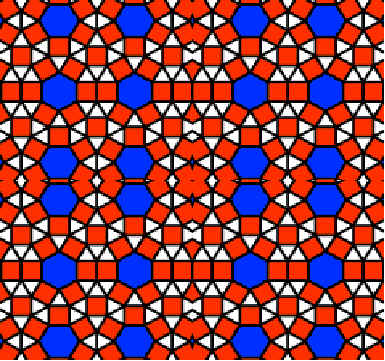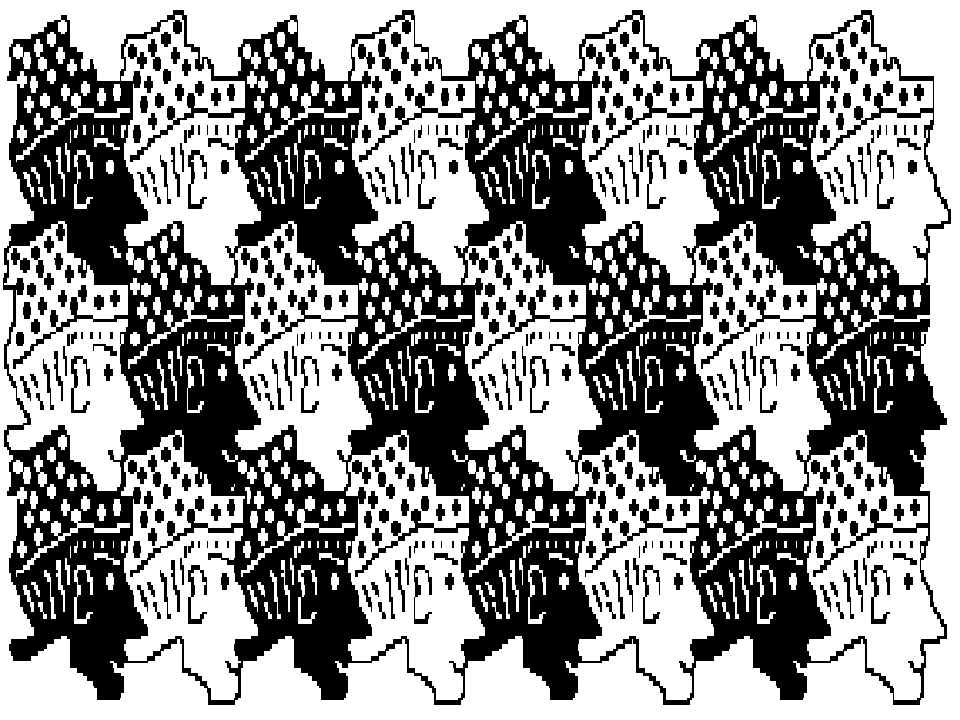

WHAT IS A TESSELLATION?
Many people do not know what tessellations are and some have never heard of that word before. Well, if you check the dictionary, it would tell you that the word "tesellate" means to form or arrange small squares in a checkered of mosiac pattern. In fact, the word "tessellate" is derived from the Ionic version of the Greek word "tesseres," which means " four" in English. The first tilings were made from square tiles.
WHAT IS A POLYGON?
A regular polygon has 3,4,5, or more sides and angles which are all equal. A regular tessellation means a tessellation which is made up of congruent regular polygons. The word "regular" means that all the sides of the polygon are of the same length, and the word "congruent " means that the polygons that you put together are of the same size and shape.
There are only three regular polygons that tessellate in the Eucliden plane namely triangles, squares and hexagons.
HERE ARE EXAMPLES OF THEM
![]()

![]()



When you look at those three samples, you will notice that the squares are lined up but whereas the triangles and hexagons are not. When you look at six triangles at a time, you will notice that they form a hexagon! So, as you can see, the tiling of triangles and hexagons are similiar and they cannot be be formed by directly lining shapes under each other - a slide or glide is involved.
You can work out the interior measure of the angle for each of these polygons
![]()

![]()
![]()

![]()


![]()
![]()

![]()
![]()
![]()
As the regular polygon must fill the plane at the vertex, the interior angle must be an exact devisior of 360 degrees. This works for only the triangle, square and hexgon, and what's more, you can show working tessellations for all these figures. For the others, as the interior angles are NOT exact divisors of 360 degrees, they canot tile the plane.
A tessellation of squares is named "4.4.4.4"
WHY? - Since a square has 4 sides, the first "4" came from there. Now, if you keep on going on from the vertex there in either direstion, finding the number of sides until you reached the on you started with, you will find that there are four polygons and each has four sides.

4.4.4.4.4
![]()
![]()
![]()
For a tessellation of regular congruent hexagons, if you chose a vertex, ad count the sides of the polygon that touch it, you'll see that there are three polygons and each has six sides, so this tessellation is called "6.6.6" :

6.6.6
![]()
![]()
![]()
A tessellation of triangles has six polygons surrounding a vertex, and each of them has three sides "3.3.3.3.3.3".

3.3.3.3.3.3
You can also use a variety of regular polygons to form a semi - regular tessellation has are :
1. It is formed by regular polygons.
2. The arrangement of polygons at every vertex point is identical




